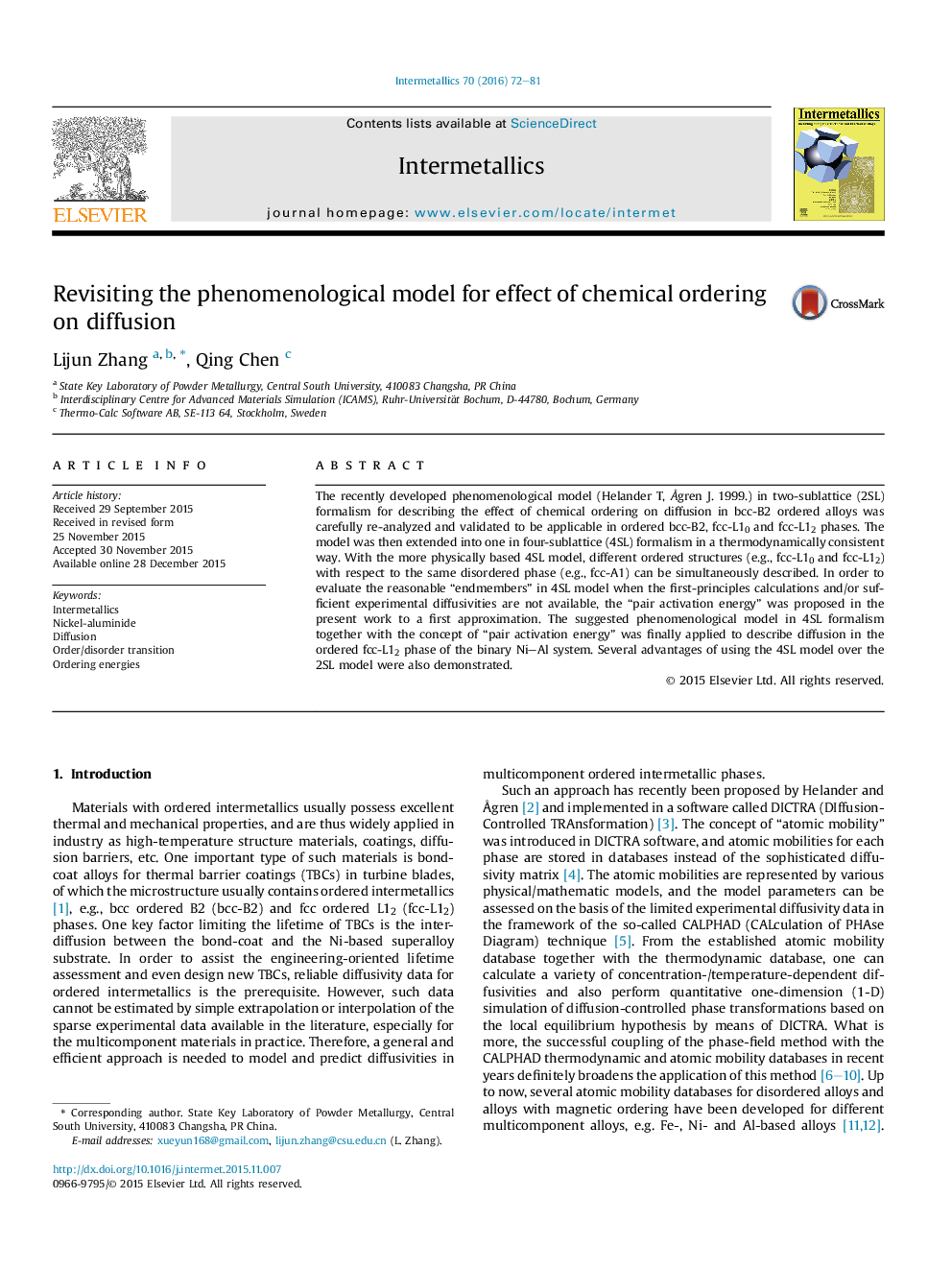| Article ID | Journal | Published Year | Pages | File Type |
|---|---|---|---|---|
| 1599682 | Intermetallics | 2016 | 10 Pages |
•The model for describing effect of chemical ordering on diffusion was revisited.•The phenomenological model in 2SL was extended into a more physical one in 4SL.•Different ordered states can be simultaneously described by the 4SL model.•Endmember in 4SL model was first approximated by introducing pair activation energy.•The proposed 4SL model was successfully applied to the ordered Ni–Al L12 phase.
The recently developed phenomenological model (Helander T, Ågren J. 1999.) in two-sublattice (2SL) formalism for describing the effect of chemical ordering on diffusion in bcc-B2 ordered alloys was carefully re-analyzed and validated to be applicable in ordered bcc-B2, fcc-L10 and fcc-L12 phases. The model was then extended into one in four-sublattice (4SL) formalism in a thermodynamically consistent way. With the more physically based 4SL model, different ordered structures (e.g., fcc-L10 and fcc-L12) with respect to the same disordered phase (e.g., fcc-A1) can be simultaneously described. In order to evaluate the reasonable “endmembers” in 4SL model when the first-principles calculations and/or sufficient experimental diffusivities are not available, the “pair activation energy” was proposed in the present work to a first approximation. The suggested phenomenological model in 4SL formalism together with the concept of “pair activation energy” was finally applied to describe diffusion in the ordered fcc-L12 phase of the binary Ni–Al system. Several advantages of using the 4SL model over the 2SL model were also demonstrated.
